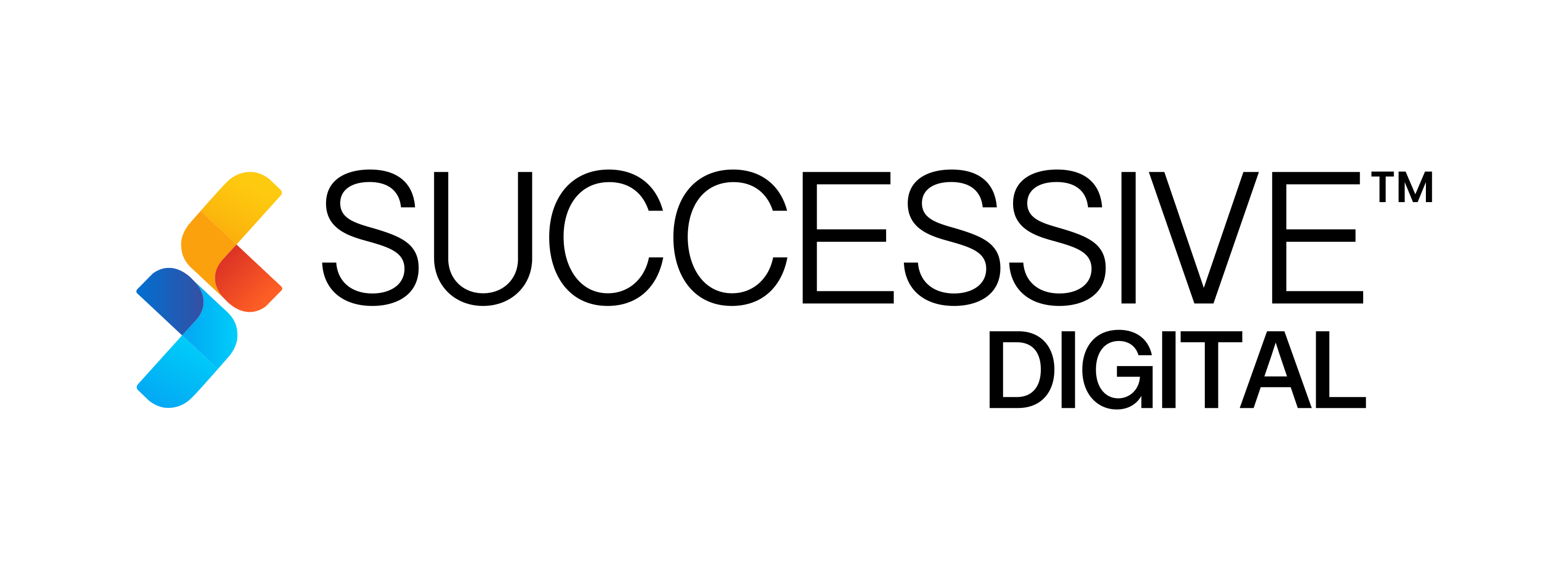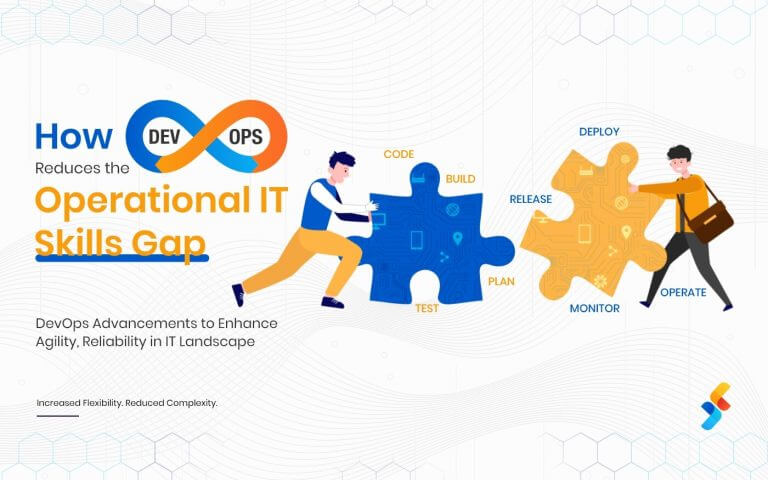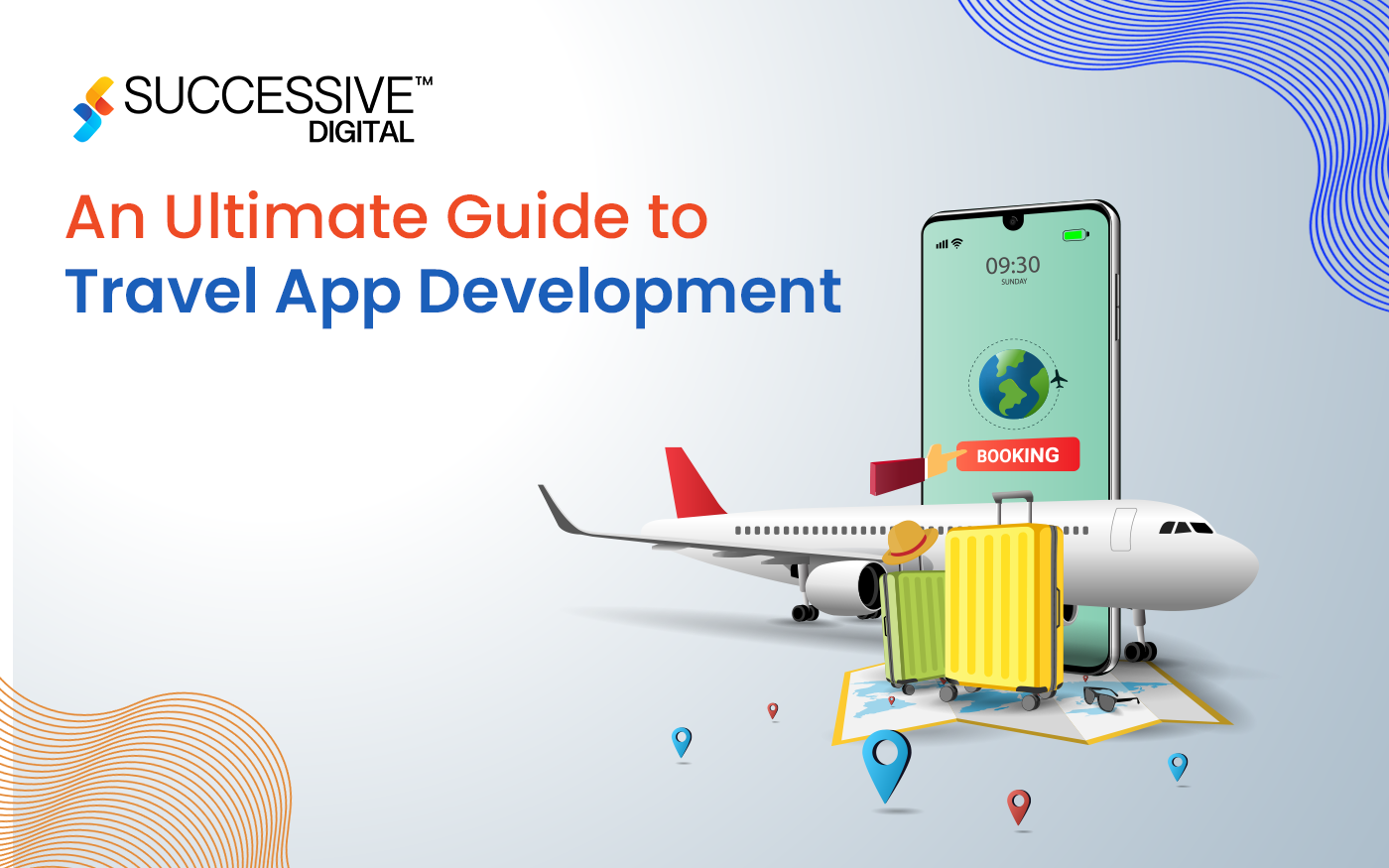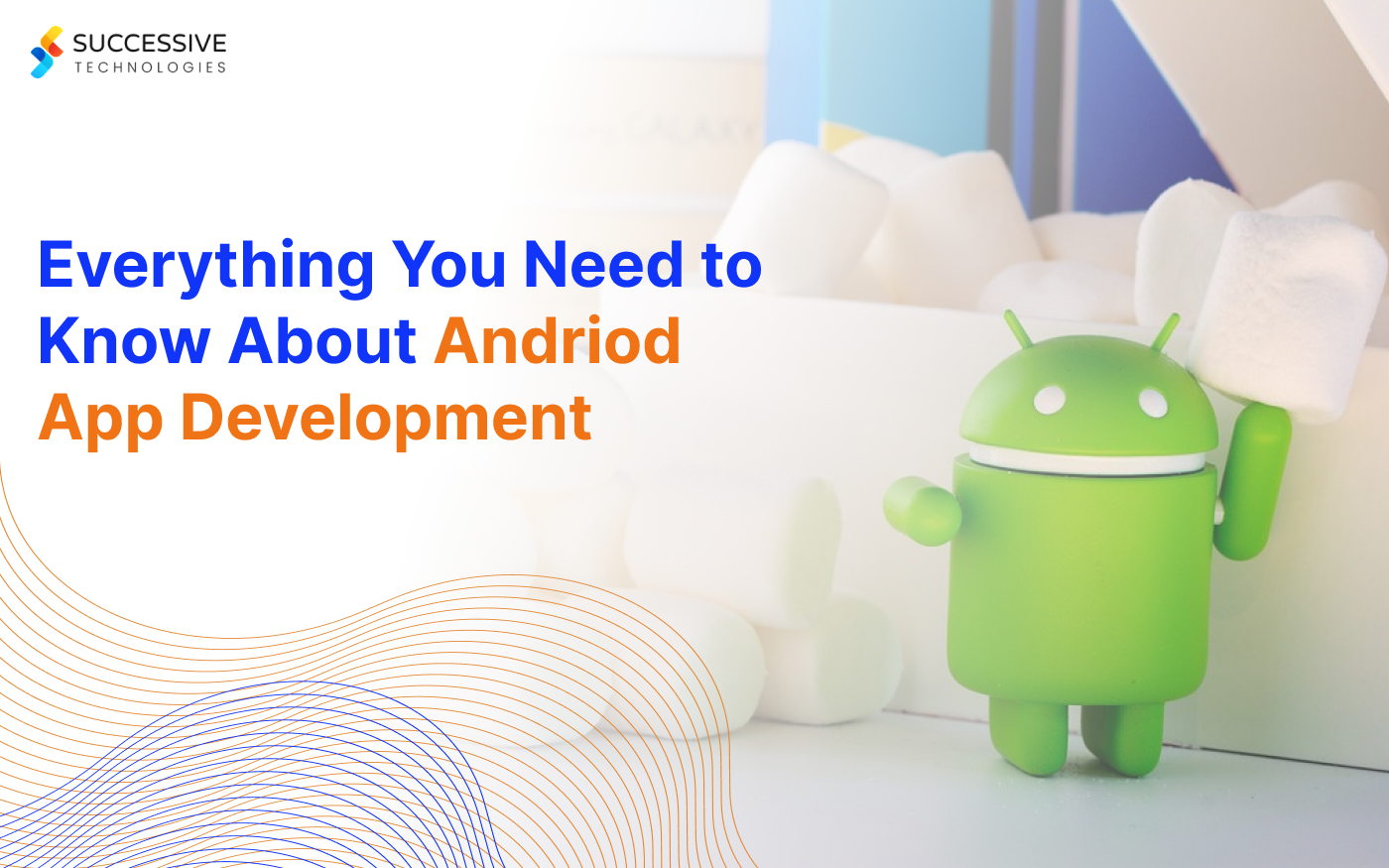The genesis of iOS application development was the launch of the first-generation iPhone back in 2007. Suddenly, phones were transformed into pocket-sized entertainment, business, and lifestyle centers through apps accessible on their iPhones, where consumers would soon spend way more of their time than they could ever imagine.
Today’s consumers are looking for better opportunities to connect with the tech world in every way possible, and innovations in app development are making this happen.
iOS app development is all about creating apps for Apple gadgets like iPhones, iPads, and iPod Touch. The languages used for building these apps are Swift or Objective-C.
Once the app is ready, it gets shared with users through the Apple App Store for easy downloading.
However, as per the recent stats,
- Around 2.6 billion people use smartphones worldwide, and 1 billion use iPhones.
- In 2021, Apple was the most valuable brand globally, with a market share of $263.4 billion.
This indicates that if your customers or partners in business are one of the millions of Apple users, you have solid reasons to develop an iPhone app. Developing an iOS app is much easier than you think and offers many benefits compared to any other app development platform.
But how do you get the finest of technical details to get started on the iOS app development services? This iOS App Development Guide outlines the same for you.
Why Do Businesses Need A Mobile App In The First Place?
As technology develops, what customers expect from their companies grows, too. There was a time when companies could operate without corporate websites or email contacts; now, apps are the centerpiece of marketing and branding. Yet we cannot forget that most small firms did not adopt owning apps immediately. Though acquisition costs were relatively high then, the main factor was the lack of clear benefits to their operations. There’s no question about that anymore.
Just as corporate websites provided avenues to engage customers, a new tool has emerged to do the same in the mobile environment: mobile apps, software, or programs that run on mobile devices. While the media frenzy is about the game, location, and social media apps, masking the business benefits, the apple could be a dynamo for branding and business development, giving the business to engage better and connect better with their target audience and re-target them if missed at any stage.
Let’s look at the current trends in iOS app development to understand the process further.
Key Trends in iOS Mobile App Development for 2024
AI and Machine Learning Integration:
Artificial Intelligence (AI) and Machine Learning (ML) are gaining prominence in developing iOS apps, offering developers accessible and affordable tools. The Core ML framework by Apple can easily integrate machine learning models into iOS applications. Developers leverage this framework to introduce advanced features like personal assistants and image recognition, significantly enhancing user experience. For example, using Core ML for image recognition enables apps to automatically categorize images based on their content, facilitating easy user navigation.
Augmented Reality (AR) Experiences:
Apple’s ARKit has catalyzed the advancement of augmented reality in iOS app development. This framework, introduced in 2017, empowers developers to merge digital elements with the real world seamlessly. The App Store has over 8,700 ARKit-enabled apps, indicating a widespread adoption of AR. In gaming and retail iOS apps, AR is making significant revolutionary changes. Popular games like Pokémon GO have exemplified AR’s potential, and retailers increasingly incorporate AR to enrich the shopping experience.
Voice User Interface (VUI) Integration:
Voice user interface (VUI) has emerged as a prominent trend in iOS app development, fueled by the ubiquity of smart speakers and voice-activated assistants like Siri. Users now interact with their devices through natural language, performing tasks and making queries with voice commands. Crafting a seamless VUI experience involves deep attention to natural language processing, speech recognition, and context-aware interactions. Successful VUI design hinges on understanding user behavior, delivering accurate responses, and ensuring contextually relevant interactions. As VUI continues to evolve, its integration transforms the way users engage with iOS applications.
The Technical Guide to iOS Application Development: From Concept to Launch
Conceptualizing the App
Start by brainstorming ideas, focusing on solving a problem or meeting a need, and finding answers to what sets your app apart.
To find an answer to this, identify your Unique Selling Proposition (USP) to distinguish it from others and understand your potential users through demographic analysis, user persona development, and competitor analysis.
One of the critical steps here is to understand your market more intimately. What are their biggest problems, preferences, and behaviors? You can achieve this by gathering both demographic (quantitative, fact-based) and psychographic (qualitative, personality-based) data from your ideal prospects.
Here are their differences:
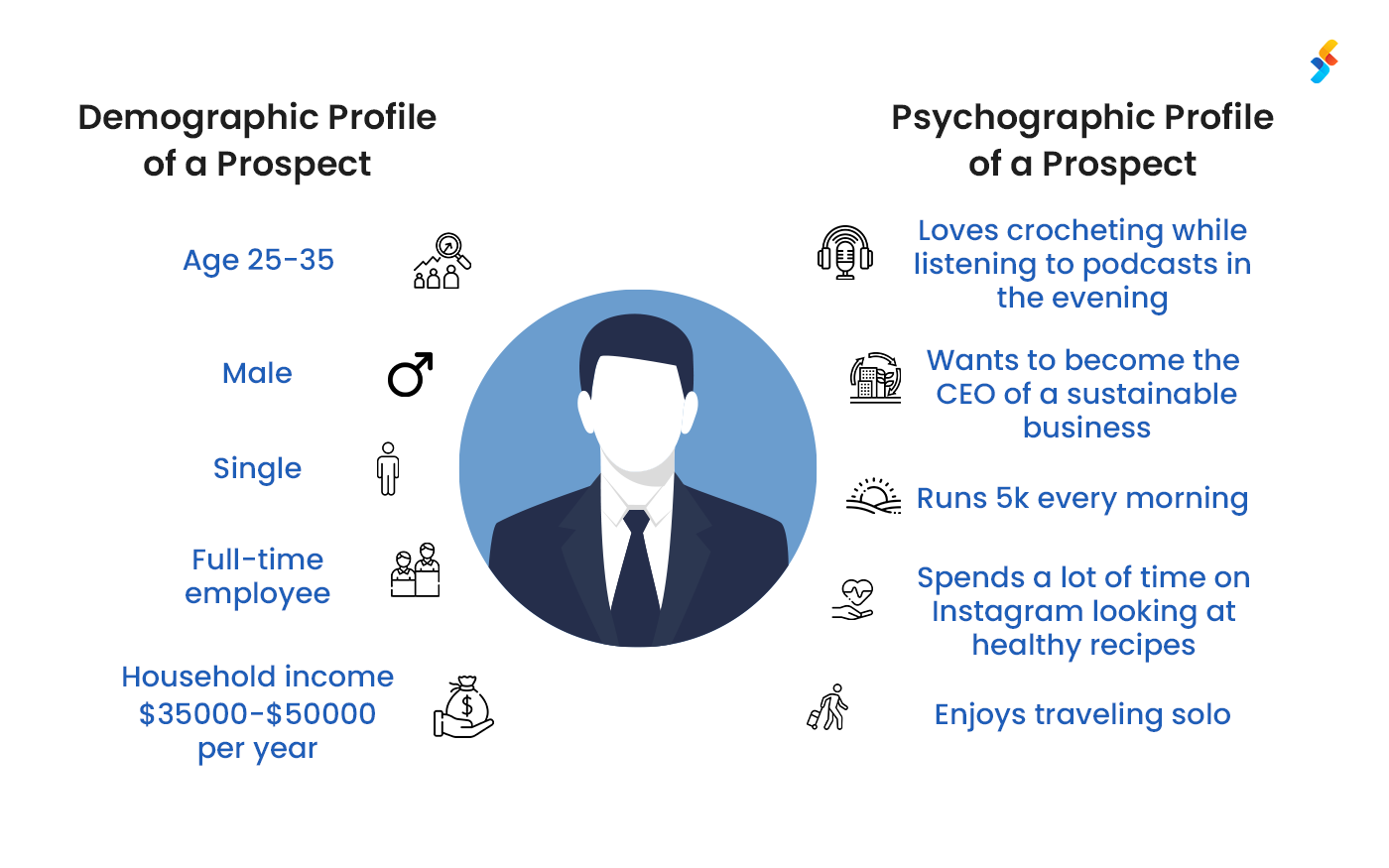
Source – Freshworks
Once done, follow the industry trends, market size, potential growth areas, and regulatory considerations. Define SMART objectives for your app—specific, measurable, achievable, relevant, and time-bound while prioritizing the core features based on importance to users and app goals. Regularly revisit and refine these elements to align with user needs and market trends as your app evolves.
Current State Assessment
Current state analysis acts as one of the most crucial steps that guides the developers through the iOS app development landscape. The analysis begins with an exploration of SwiftUI’s latest advancements and empowering developers to leverage its capabilities effectively, ensuring a harmonious marriage of aesthetics and functionality. Each update introduces new features, security enhancements, and compatibility considerations, and CSA discovers those that directly influence app performance and user satisfaction.
Designing the App
Designing your iOS app involves creating an interface that is visually appealing and user-friendly. The importance of UI/UX (User Interface/User Experience) in iOS apps cannot be overstated—it directly influences how users interact with your app. A well-designed UI enhances user satisfaction, making the app more intuitive and enjoyable.
Prioritize simplicity, consistency, and accessibility in your design by creating a clear and understandable wireframe.
Following best practices in iOS interface design, such as employing intuitive navigation and providing clear feedback, is essential for creating a positive user experience and ensuring the success of your app in the competitive landscape.
Here are the tools for creating mockups and prototypes.
Sketch or Adobe XD:
- Utilize design tools like Sketch or Adobe XD to create high-fidelity wireframes and mockups. These tools facilitate collaboration, prototyping, and efficient design iterations.
Figma:
- Figma is an excellent collaborative design tool that allows real-time collaboration among team members. It’s cloud-based, ensuring seamless communication and version control during the design process.
Prototyping Tools (InVision, Marvel):
- Prototyping tools like InVision or Marvel help create interactive prototypes, allowing stakeholders to experience the flow and interactions of the design before development begins.
Technical Aspects
Selecting the appropriate development tools is important in creating successful iOS apps. Swift is Apple’s preferred language for iOS app development, known for its clarity and speed. It’s crucial to leverage Swift’s capabilities for clean and efficient code. Xcode serves as the primary IDE, offering a suite of tools for coding, testing, and debugging. Its user-friendly interface streamlines the development process. By choosing Swift and Xcode, developers can harness the power of reliable tools, ensuring the creation of a well-crafted and efficient iOS app.
Combining the two, here’s the tech stack for ideal iOS app development.
Programming Language:
Swift: Swift is the primary language for iOS development and is known for its performance and safety.
App Architecture:
Model-View-Controller (MVC): A widely adopted architectural pattern for organizing and structuring code in iOS applications.
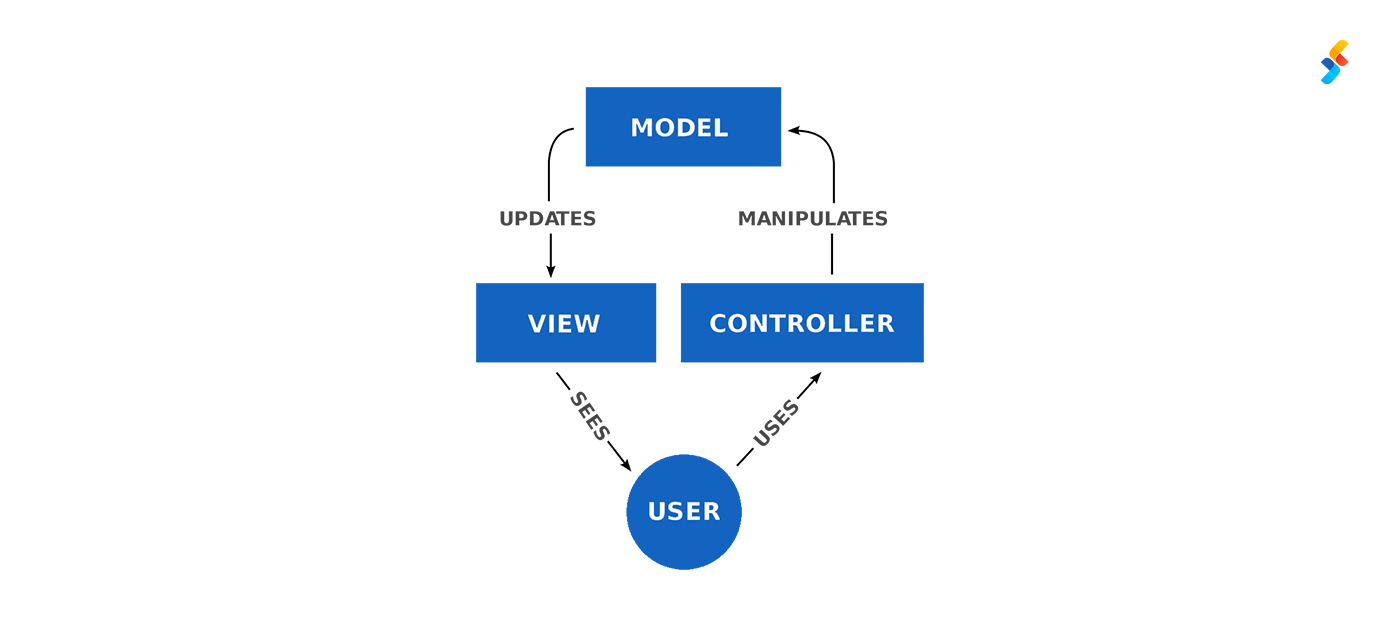
User Interface (UI) Framework:
UIKit: A framework for building the graphical user interface of iOS applications, providing essential components for user interactions.
Version Control:
Git: A distributed version control system for tracking changes in source code during development.
Dependency Management:
CocoaPods or Swift Package Manager: Tools for managing external dependencies and integrating third-party libraries into the project.
Database:
Core Data: Apple’s framework for managing the model layer of an application, facilitating data storage and retrieval.
Networking:
URLSession: A powerful framework for making network requests and handling data transfer in iOS applications.
Testing:
XCTest: Apple’s native testing framework for unit testing and ensuring the reliability of code.
Continuous Integration (CI) and Continuous Deployment (CD):
Jenkins, Fastlane, or similar tools: Automation tools to streamline the build, test, and deployment processes.
iOS Mobile App Development: The Process
Once your app idea, tech stack, and design are validated, it’s time to put it all together in the development phase and make an iOS app. This is where the development stage kicks in, where the coding using Swift or Objective-C brings the app to life, implementing the features envisioned in the planning stage. This systematic approach ensures a comprehensive and well-executed iOS app development journey.
Typically, development involves coding two parts—the front end and the back end, which may look like this.
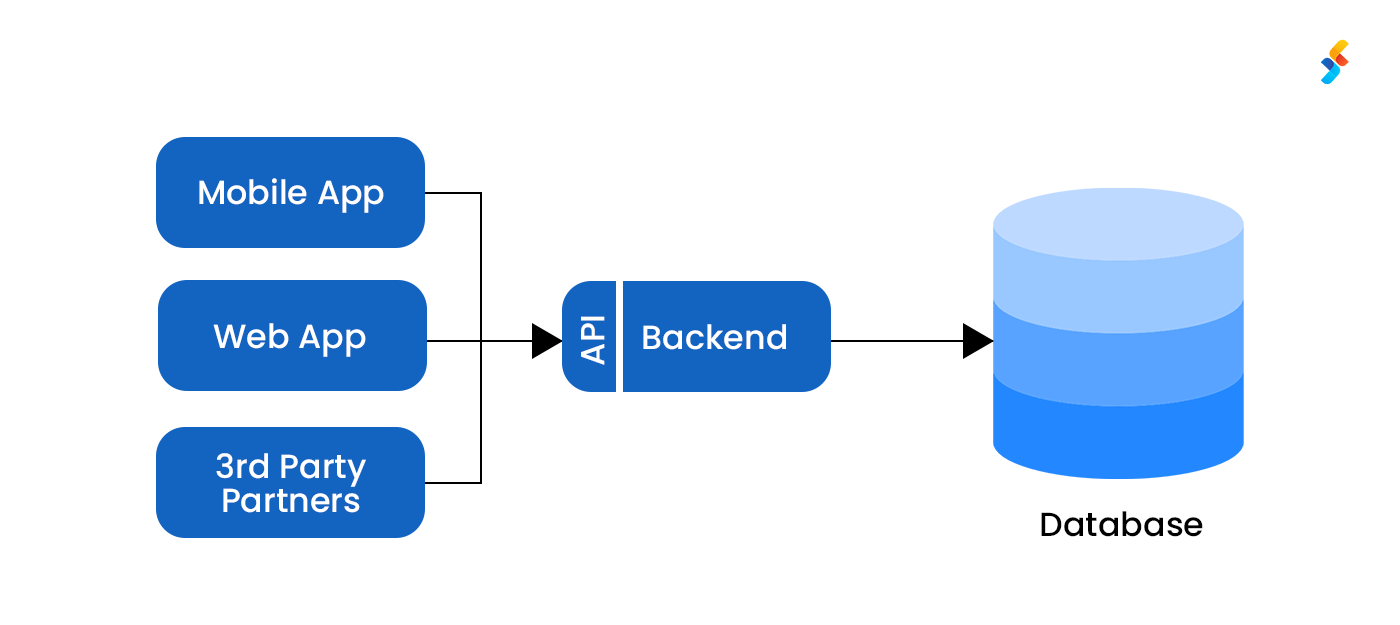
The front end is where the app gets built, including how it looks and some extra functions. But, the heavy thinking and logic happen elsewhere. That’s the back end, which deals with code on the web server. The back end connects to a database to save and get information.
Both front and back end connect to each other through APIs (Application Programming Interfaces). This split helps in making the app faster because you can work on different parts at the same time. It also makes fixing and keeping the app up-to-date simpler.
Agile methodology in developing an app for iPhone
Agile development methodology is a dynamic and collaborative approach to creating iOS apps, which involves breaking down the development process into short, focused periods called sprints. Small app parts are built during these sprints, allowing for continuous feedback and adjustments. Customer input is valued throughout, ensuring the final app meets user expectations. The process is adaptable, allowing changes to address evolving requirements at any stage. Cross-functional teams collaborate efficiently, and tasks are prioritized based on user value. Regular releases and transparent communication keep the development process responsive and customer-oriented, delivering a high-quality iOS app efficiently.
Coding standards and best practices
When developing iOS apps, adhering to coding standards and best practices is crucial for creating a robust and maintainable application.
- Follow consistent naming conventions for variables, functions, and classes to enhance code readability.
- Regularly run SonarQube scans to identify and remediate security vulnerabilities, code smells, and bugs. By incorporating SonarQube into your development workflow, you can proactively address issues before they become critical.
- Configure pre-commit hooks to perform tasks such as code linting, testing, and security checks. By configuring these hooks, developers are prompted to address potential problems before the code reaches the shared codebase.
- Integrate Husky to manage and enforce pre-commit hooks consistently across the development team. By integrating Husky into your project, you can easily manage and configure these hooks, ensuring that specific tasks or checks are executed before allowing a commit.
- Regularly comment on your code to explain complex sections or highlight important details.
- Keep your codebase updated with the latest Swift language features and iOS SDK versions to benefit from performance improvements and new capabilities.
By incorporating these coding standards and best practices, you can deliver well-structured and maintainable iOS mobile app development solutions to the users.
What frameworks are ideal for iOS application development?
There are many moving parts in the mobile app development process. Teams have to structure, test, evaluate and debug software, manage integrations and development tools, create wireframes and prototypes, write clean code, design the UI, and carry out other ancillary tasks that support successful development. To ensure this development process operates like a well-oiled machine, development frameworks—also known as integrated development environments (IDEs)—must be employed.
IDEs bring together all aspects of mobile app development in one single coding environment, which enables developers to be more productive and automate processes wherever possible. Let’s explore the most popular IDEs for iOS mobile app development, and what they bring to the development table.
1. XCode
XCode is Apple’s integrated development environment (IDE) for the development, designing, testing, and distribution of applications for iOS devices. It is the most preferred iOS IDE for professional developers and forms the foundation for all iOS application development. It is also a prerequisite for app development in other environments.

XCode offers powerful development tools such as the Swift programming language and the SwiftUI user interface framework, TestFlight for product testing, and Apple Store Connect for publishing and managing apps on the App Store. Apple also offers developers the XCode Cloud, which is a continuous integration and delivery (CI/CD) model for builds to happen faster in the cloud.
2. Flutter
Flutter is Google’s cross-platform development environment that empowers developers to build apps for any browser or iOS, Android, Windows, macOS and Linux device, using a single codebase. The open-source platform is the most preferred cross-platform development framework for thousands of professional developers.
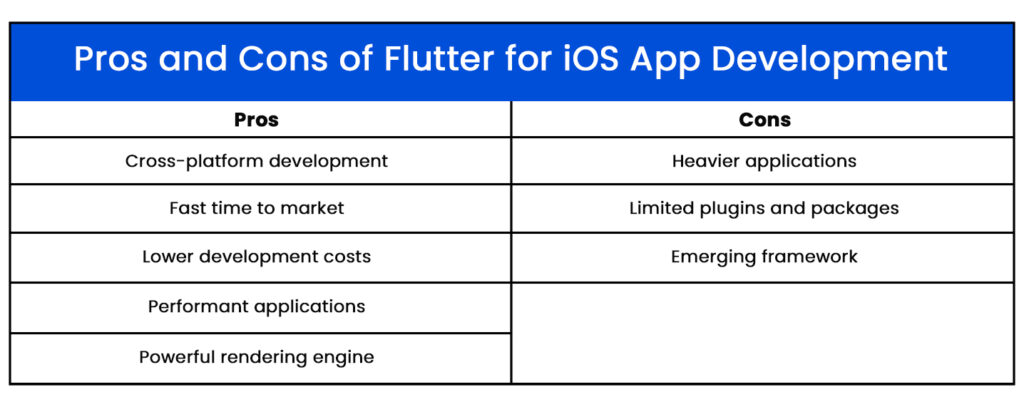
Apps built on Flutter are highly performant; even web applications offer a native-like user experience. The software is written in Dart—an object-oriented programming language that enables higher developer productivity. The framework also reduces development time with its ‘hot reload’ feature for instant implementation of changes without losing the current application state.
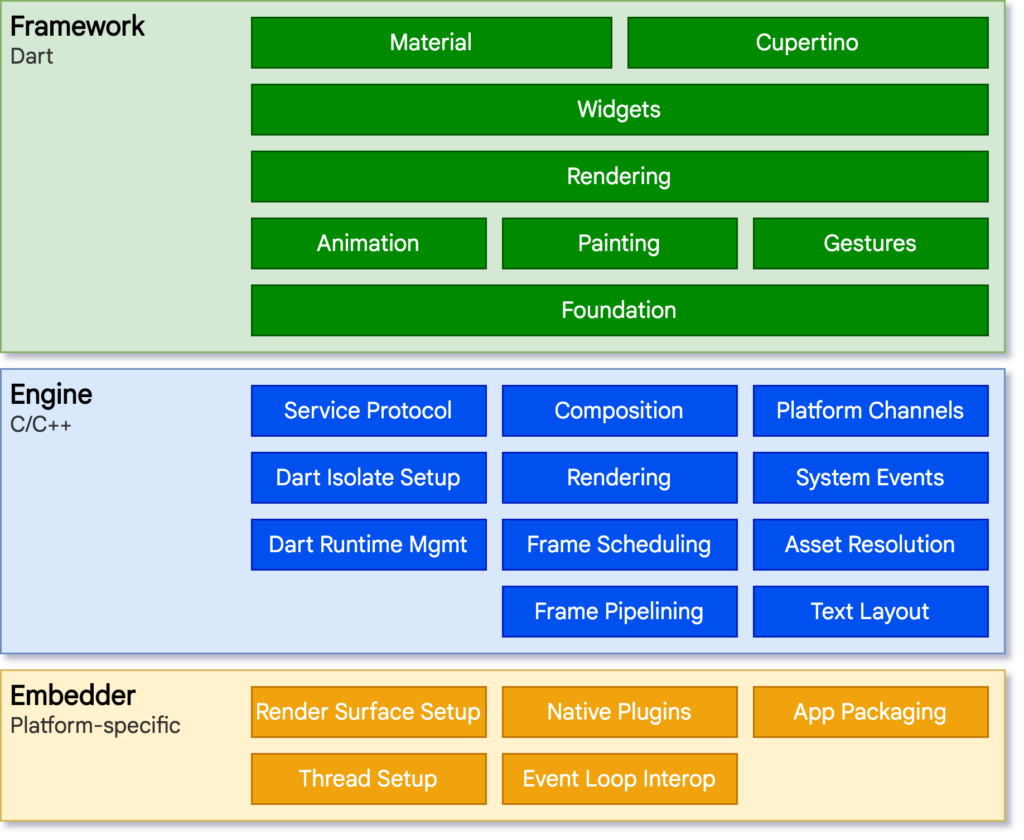
Flutter is founded on an extensible system, and exists as a series of independent libraries dependent on the underlying layer. Every component of the framework is optional and replaceable. Source: Flutter
Widgets are at the core of app development with Flutter. Developers can build stunning apps quicker with a vast library of widgets and many functionalities.
3. React Native
After Flutter, Meta’s React Native IDE is the most popular cross-platform development framework for developers.
The JavaScript-based framework enables developers to reuse code and access pre-built components to speed up development. Reusable code also means enterprises don’t have to hire separate teams to develop apps for multiple platforms.
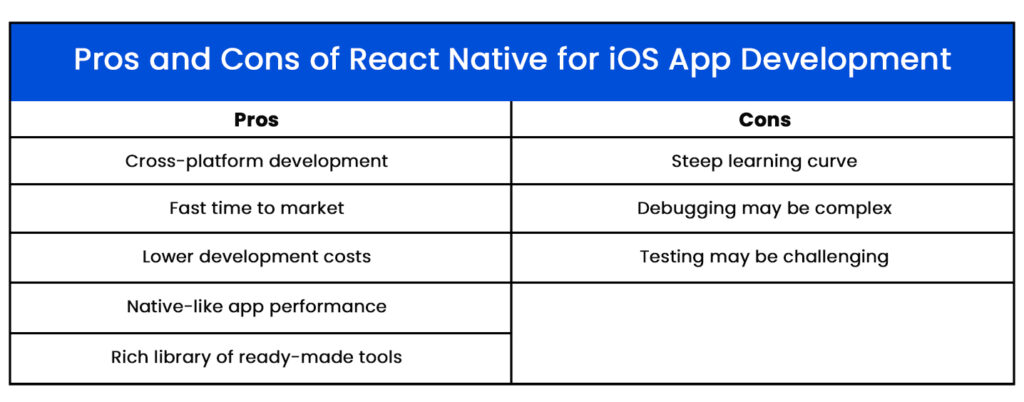
Beyond this, React Native offers a Fast Refresh feature to further expedite the development of fast and future-ready applications with performance similar to that of applications built on native code (Swift).
Testing the App
Testing is a crucial phase that involves systematic testing of various aspects, including user interface responsiveness, feature functionality, and compatibility across different iOS devices and versions. Through meticulous testing processes, such as unit testing, integration testing, and user acceptance testing, the process identifies and rectifies any potential issues or bugs.
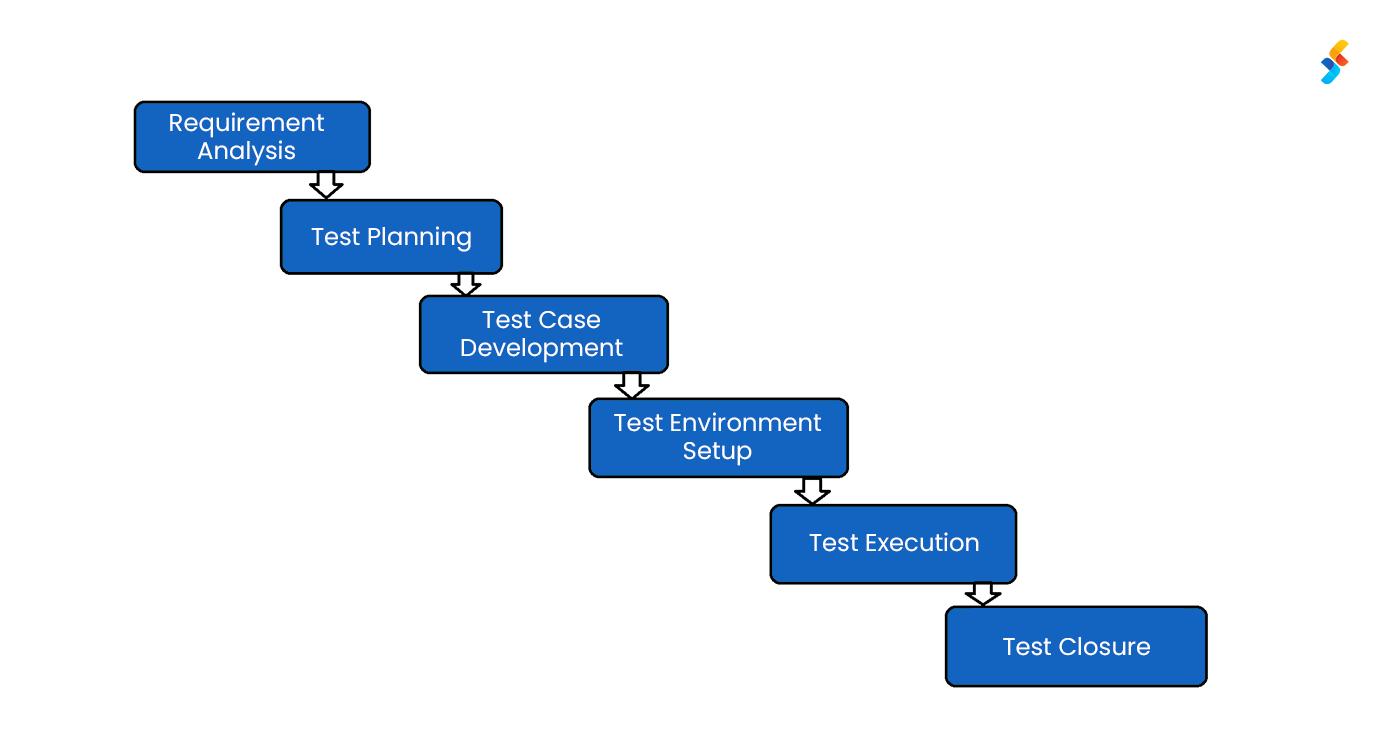
Careful implementation of the software testing cycle (view above image) helps you determine when and where to use automated testing tools.
Automation helps speed up your tests and keep them consistent. However, they can’t be used for qualitative tests that require subjective answers, such as usability testing.
Facets Of App Testing
Automation Testing:
To streamline the testing process by automating repetitive tasks, ensuring efficient and consistent test execution.
Performance Testing:
To evaluate how an iOS app performs under different conditions, ensuring optimal user experience. Performance testing also assesses the app’s behavior under expected load.
Security Testing:
To identify and address vulnerabilities that could compromise the app’s integrity and user data. Security testing also validates the encryption of sensitive data.
Unit Testing:
To verify the correctness of individual units or components within the app. Unit testing ensures the app handles errors appropriately.
Tools Used for Testing
XCTest:
Apple’s native testing framework is integrated into Xcode, and XCTest facilitates unit testing and UI testing for iOS applications.
Appium:
A cross-platform mobile application automation tool that supports iOS allows for automated functional and regression testing.
Calabash:
An open-source framework for mobile app testing, Calabash supports behavior-driven development (BDD) and enables automated acceptance testing.
Detox:
A gray box end-to-end testing library for React Native iOS and Android applications offers fast and reliable testing.
EarlGrey:
Developed by Google, EarlGrey is a powerful, open-source UI testing framework for iOS apps, emphasizing ease of use and scalability.
TestFlight:
Apple’s official beta testing platform allows for the distribution of pre-release versions of iOS apps to testers for feedback before the official release.
Charles Proxy:
A web debugging proxy tool that helps monitor and manipulate network traffic, testing the app’s behavior under different network conditions.
Marketing and Launch of iOS apps
Once the app is developed, it’s time to make it available in the public domain. However, prior to launch, a well-defined pre-launch plan is essential. This involves creating a compelling app store listing with engaging visuals and concise, informative descriptions.
If your iOS app serves customers directly to the open market, leveraging social media platforms and influencers can amplify visibility and generate anticipation. Incorporating a pre-launch website or landing page can also effectively capture leads and build anticipation.
The launch plan is a critical phase that demands meticulous execution. Timed press releases, promotional events, and collaborations can significantly boost initial downloads. Implementing App Store Optimization (ASO) techniques, including strategic keyword placement, can enhance discoverability. A comprehensive post-launch analytics strategy is equally vital.
Utilizing tools like App Store Connect and Google Analytics helps monitor user engagement, retention rates, and in-app behaviors. Customer feedback through reviews is invaluable, and addressing concerns promptly fosters positive user relations.
A strategic mix of marketing efforts, a well-thought-out launch plan, and robust post-launch analytics collectively form a holistic approach to ensure
- sustained visibility
- user satisfaction
- and continuous improvement of iOS apps.
Final Words
How we think about functionality and features has changed, along with the development process—which, thanks to current development techniques, now has MVPs to consider. Careful planning and consideration before moving into development and potential use of wireframes can make the early steps easier. As a pioneer iOS application development company, Successive Digital co-innovates with you and leverages a strategic approach to outcome-driven development services. With years of experience providing iOS app development services, our experts focus on bringing outcomes by balancing the mobile app development consulting, strategy, technical capabilities, performance, and costs.

